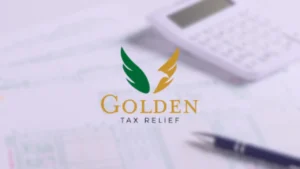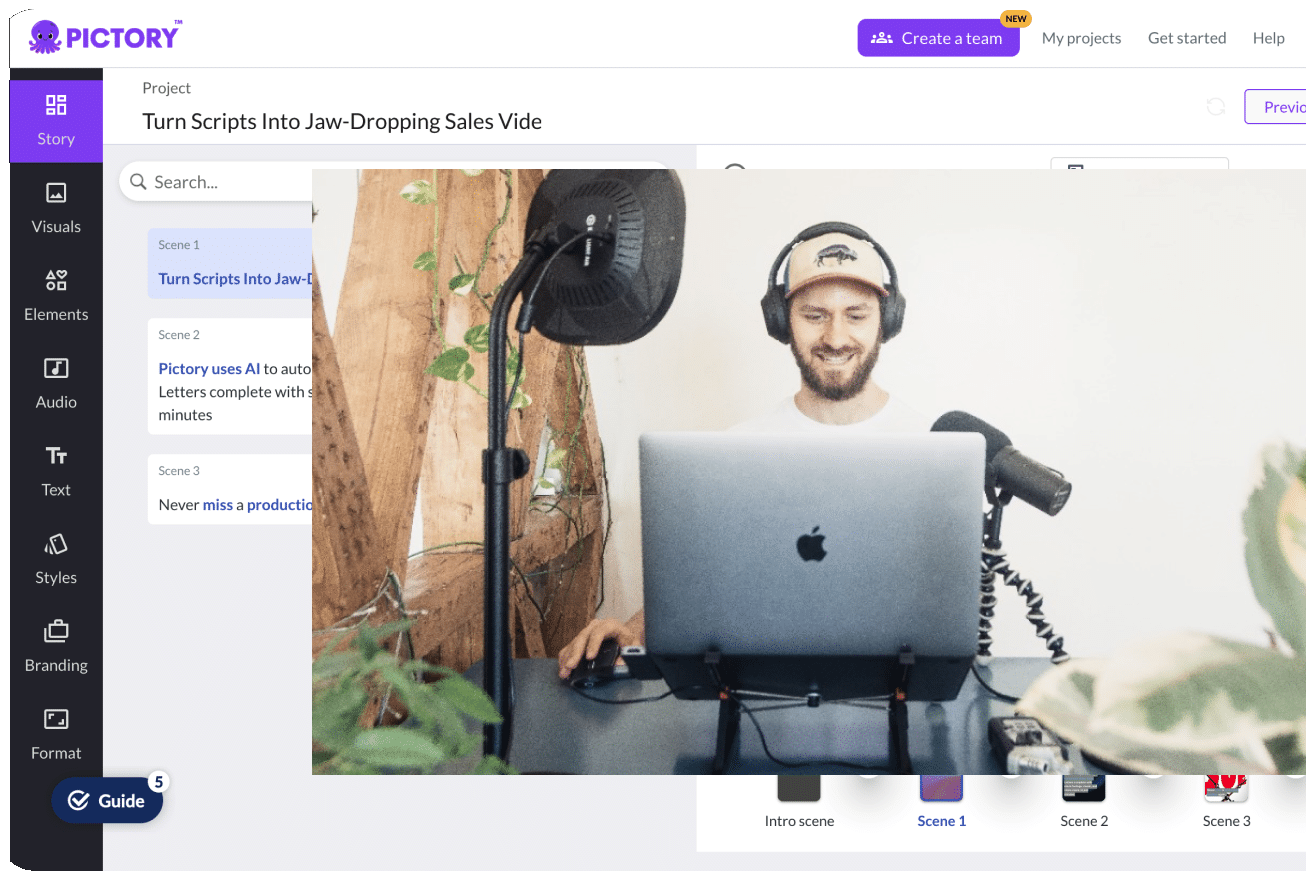How do you get your content marketing to stand out in 2025?
The notion is something of a paradox.
We’ve entered a time where the space is oversaturated.
Differentiation is challenging and can seem insurmountable at points– but it’s also integral.
Most readers of this article undoubtedly know the value of content creation and a content marketing strategy.
However, in case you’re having doubts, think you’re fighting a losing battle, and that your focus might be better allocated elsewhere, we’ll reinforce your content planning prioritization with some facts:
97% of brands utilize content marketing and content creation since it’s what modern consumers want.
It’s their preferred way to learn about businesses and interact with them.
Content creation and content marketing cost 62% less than outbound marketing.
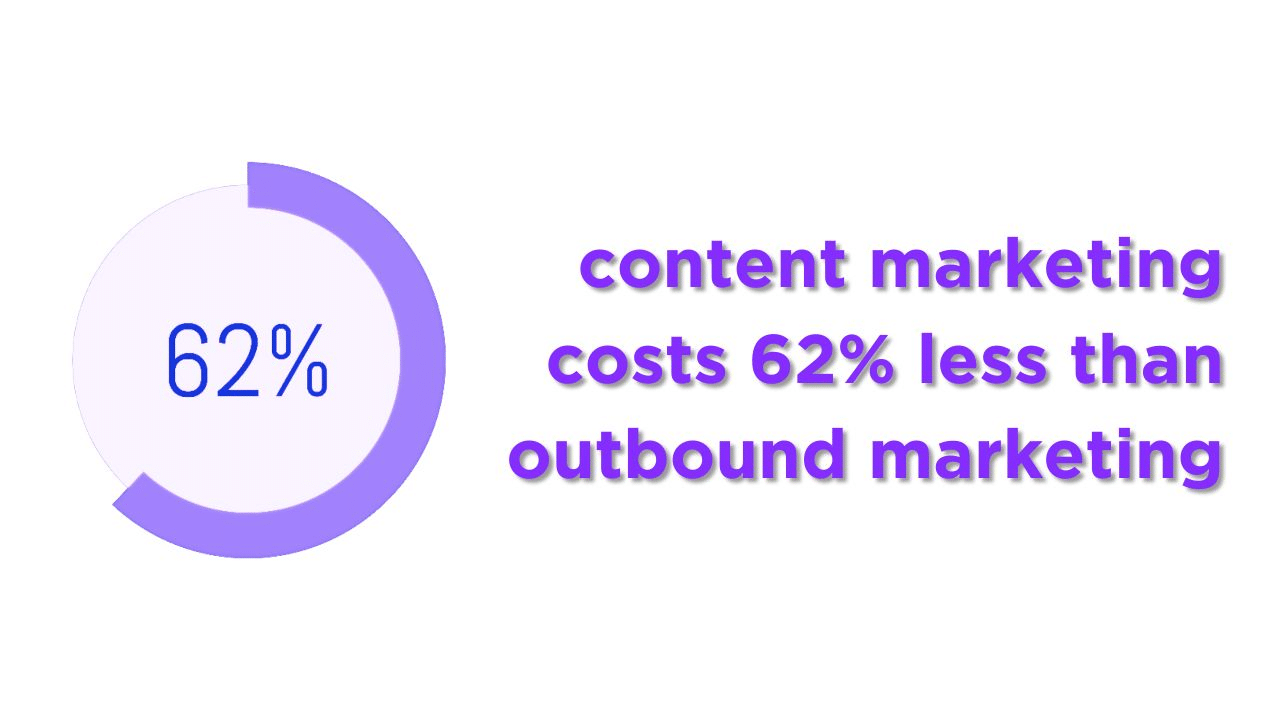
What’s more, content creation and content marketing can claim bragging rights for generating leads at a 300% higher rate than outbound marketing.
Yes, your content marketing strategy, content planning, content creation, and related aspects like social media platforms are as pivotal as ever.
Your continued focus on such a crucial business component shows big-picture thinking, yielding the most optimal results that foster business growth.
Create professional video in minutes

A Helpful Consideration Before Moving Forward:
Before we go further with our content marketing and content planning guide for 2025, we’ll offer you one last insight.
Hold this thought at the back of your mind while brainstorming and creating content: short-form video content has the highest ROI of content creation methods.

In fact, 90% of content marketing professionals will boost or break even on their investment this year by using short-form videos when creating content.
On the above note, Pictory offers a seamless blend of AI video creation and editing through a highly intuitive user interface.
It should come as no surprise that the ROI on a Pictory-produced video can generate significant returns.
After all, the upfront costs are minimal, but the conversions, revenues, and profits over the long haul will be exponential.
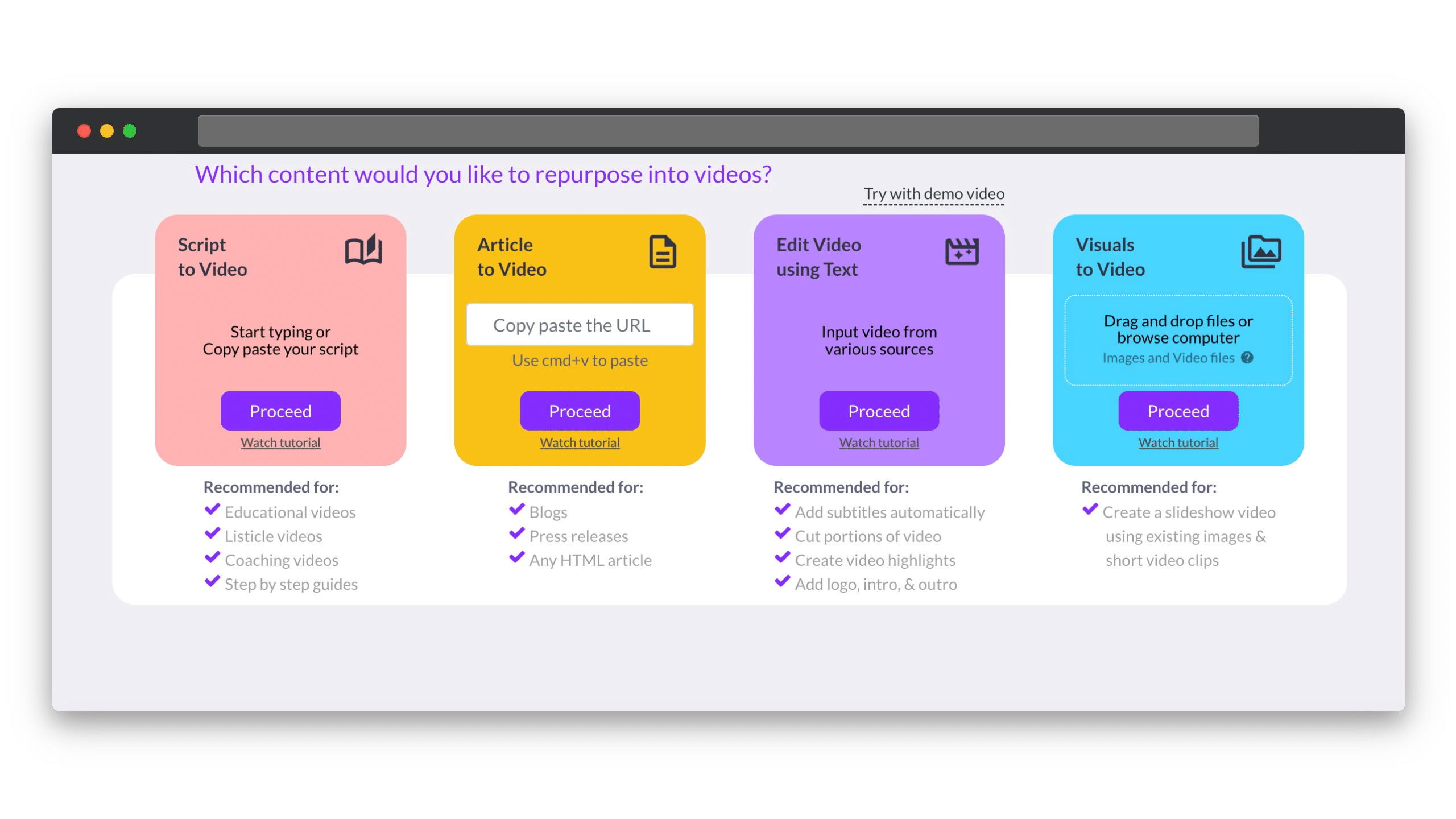
Explore our full range of video editing tools by signing up with Pictory today or upgrading your existing plan.
Content Marketing Definition:
The act of branded, relevant, valuable, and consistent content creation (and distribution) is known as content marketing.
It’s a strategic approach to boost bottom lines by encouraging customer behaviors.
As one of the primary ways to drive organic traffic to your website, content marketing necessitates that your brand offers customers and prospects ways to solve problems.
This applies to their personal lives (B2C) and work lives (B2B).
Helpful Insights For Marketing Pros Of All Experience Levels.
Of course, those well-immersed in content planning, content strategy, and content creation are more than familiar with the definition of content marketing.
Still, even at the highest levels, it’s always helpful to double back and remind ourselves of the basics to help shed light on the most successful content marketing elements.
The Cardinal Content Marketing Strategy Rule: Variety Is The Spice Of Life-Long Customer Loyalty.
Why is a variety such a significant factor in driving your content marketing success?
We’ll explain below.
There Are Times To Stay In Your Lane.
There’s something to be said for staying in your lane.
It’s a philosophy and approach that applies to creating content like a post, for instance.
Yet, this restrictive thought process doesn’t apply to the number of methods and approaches you implement into your campaign.
“Staying in your lane” applies most to formulating your content strategy around your target audience.
Their inclinations will help dictate where you focus your efforts.
When is it Time to Switch Your Content up?
On the other hand, diversity and versatility in your content marketing strategy are crucial, no matter your target audience.
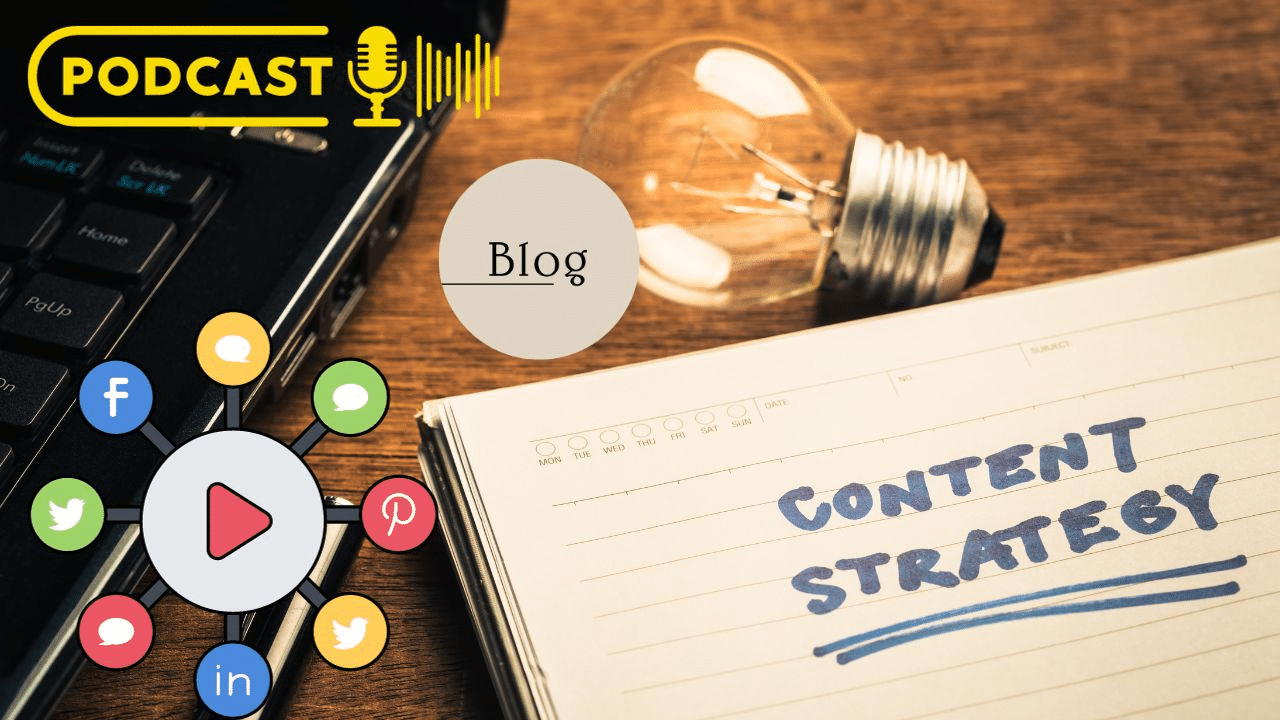
Any content marketing strategy necessitates a mix of blogs, podcasts, social media posts, infographics, and more.
Your target audience and their traits give you a creative and thematic direction.
The “lane” is also your overarching web content marketing strategy as much as it’s your target audience.
It’s the thread and the focus interlinking your diverse methods of creating content, whether a blog post, social media hashtag, YouTube video, etc.
Meshing Diversity And Consistency within Your Content
Consumers want consistency from their brands, and your content–no matter how diverse–needs to provide that defining, subliminal “ah-ha” for your target audience to associate with your company.
For instance, an AI content marketing video can be combined with an AI-generated voice that provides unwavering consistency for your brand.
You won’t need to hire a voice actor–you’ll have steadfast narration that audiences can associate with your brand.
Implementing Videos To Diversify Content

Pictory can further bolster that consistency in your content creation process by turning your diverse forms of content into AI videos (e.g., our blog post to video feature).
The above feature reinforces the connectivity of your content creation process and overall content marketing strategy.
Multiple forms of content reach various channels with the same message–each delivered with unique execution.
We’ll explore these various content creation forms further below.
Social Media Strategy: A Driving Force In 2025.
Your branded social media accounts are like gold in 2025.
Let’s dig into why.
A Shining Example Of Diversity And Versatility.
Plus, nothing speaks more to the always-present need for versatility and diversity in your content marketing strategy than social media content and leveraging your social media accounts.
The average person (relevant to B2B and B2C brands) will switch between seven social media platforms each month.
Let’s consider the above points as we broach this next subject.
Seasoned pros–including well-traveled content creation experts–might look for that next big thing to give them a leg up.
If that sounds like you, your logic is sound.
Competitive advantages don’t come from nothing–you must always seek an edge.
Are Consumers Getting Sick Of Social Media?
When you hear a concerning statistic like almost three-quarters of users are sick of ads on their social media channels, you might expect the bubble to burst.
We can’t fault you for being worried–who wants to scare off current and potential customers?
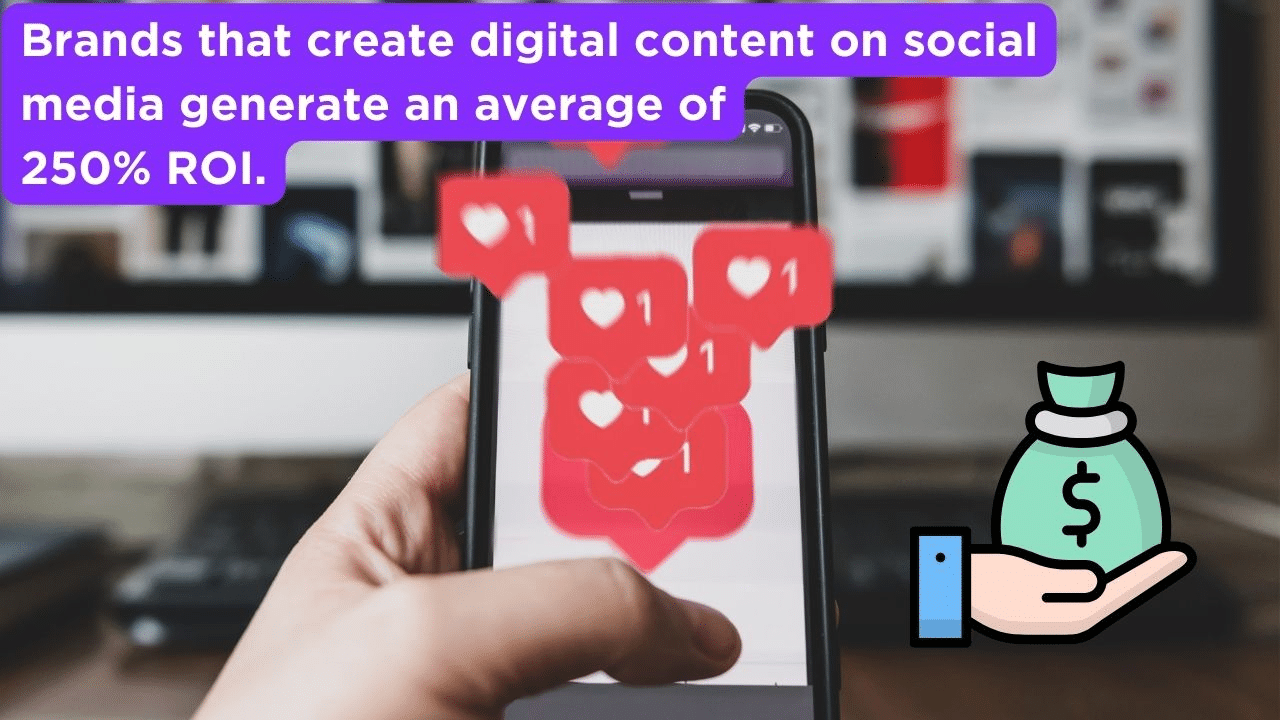
Despite the above numbers, brands that create digital content on social media generate an average 250% return on investment.
Our past two statistics about brands and their social media posts might seem conflicting.
Peeling back the layers tells a different story.
Your social media marketing strategy will be crucial in maintaining a versatile approach to brand-wide digital content creation.
Still, there’s a caveat: Consumers demand branded web content creation that makes them feel connected and doesn’t seem like it’s just trying to sell.
Create Content On Social Media To Tell Your Brand Story And Generate More Leads.
Nearly 80% of consumers want brands to use social as a connecting force.
57% of consumers who feel connected to a brand will spend more with them, while 76% will choose their products/services over a competitor’s.
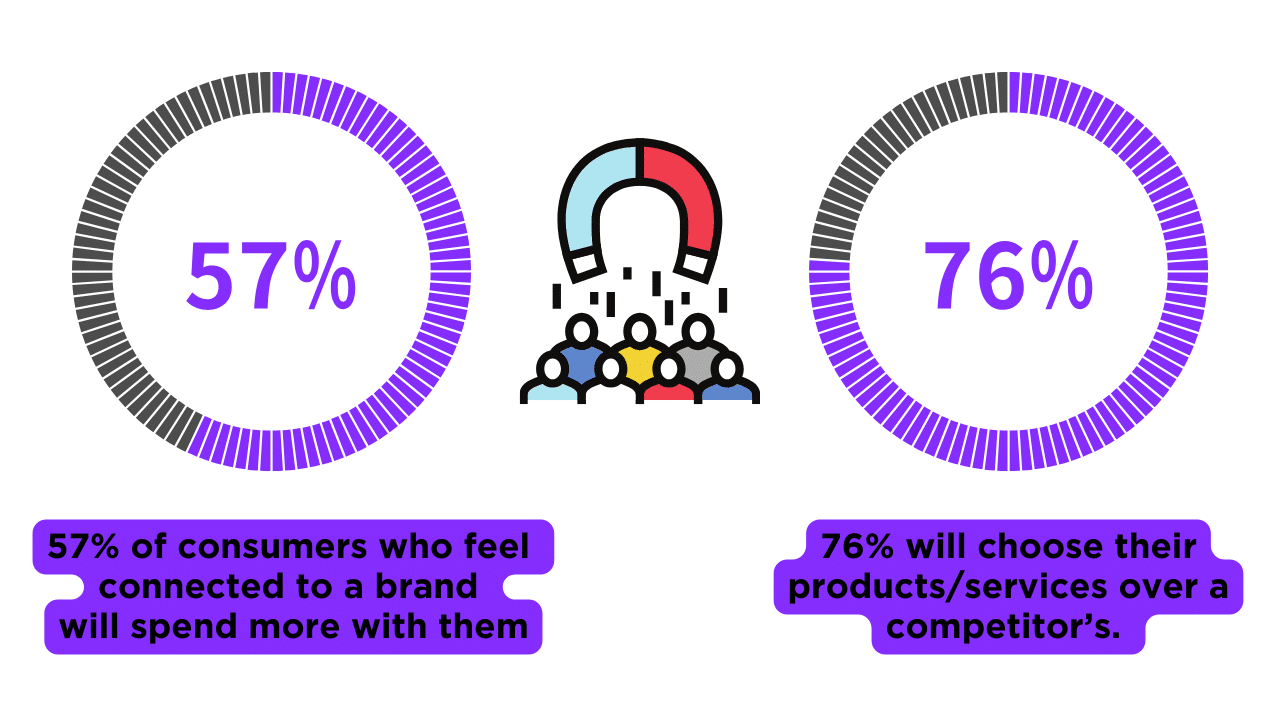
So, how can you create content on social media that connects with customers instead of coming across as overly sales-focused ad content they don’t want to see?
Content Planning For Social Media Should Focus On Shorter, Captioned Videos.
A recent TechTarget article suggests that short-form video content should be the primary focus of your social media content planning process.
Reels/stories on Instagram or Facebook pages, YouTube Shorts, and TikTok posts all help drive a successful marketing strategy, depending on your audience.
Further bolstering the above point is how video content will foster 82% of global consumer internet traffic.
On top of that, nearly three-quarters of consumers–including your target audience–prefer short-form videos (and long-form ones, too).
Short-form content can include product demonstration, story-telling, company communications, or event promotion.
Once more, we’re referring back to versatility here.
These videos can perform any number of functions in (ideally) under a minute, according to Hootsuite.
While the videos can do much of the heavy lifting, social media captions are necessary to draw viewers.
85% of viewers scroll their channels with muted volume.
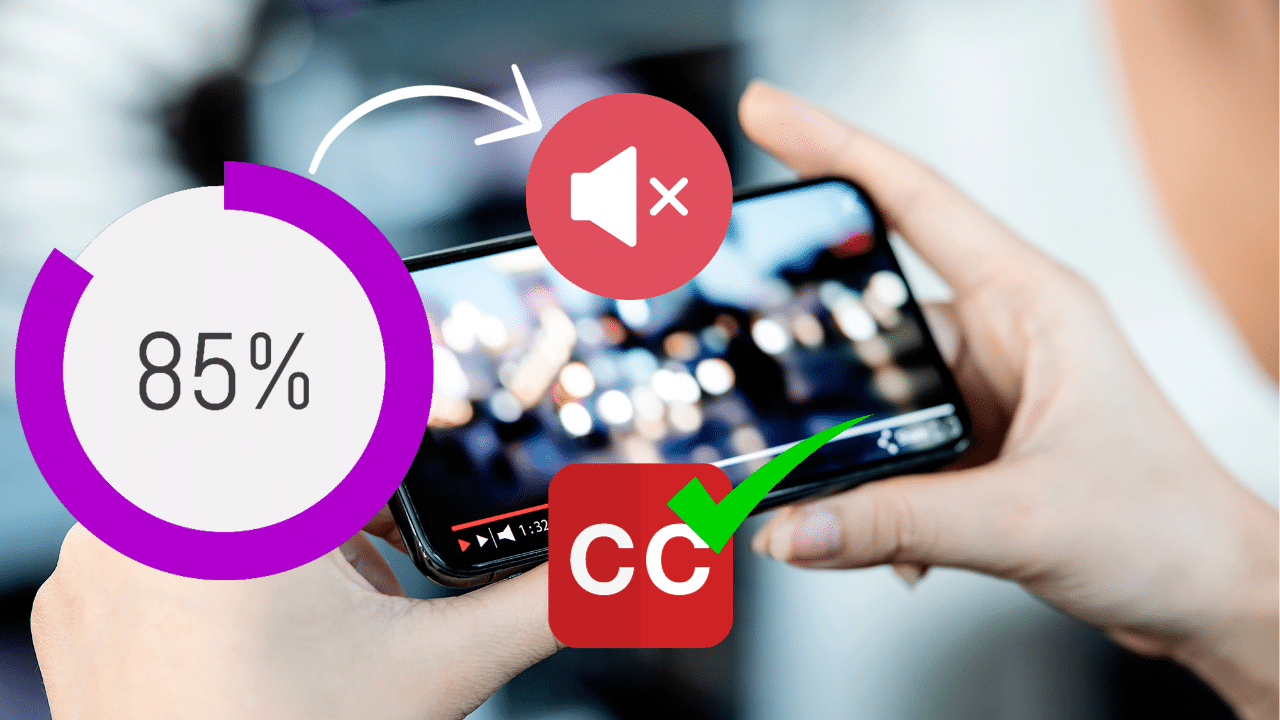
Moreover, captions tell your brand story to those hard of hearing and in noisy environments, likely generating more leads and reaching more potential customers.
Connecting Your Socials With The Rest Of Your Content Marketing.
Content planning and content creation on your socials isn’t only an opportunity to reach a vast, relevant audience of potential and existing customers.
It also allows you to create content to connect an overarching, effective content marketing strategy.
The harmony and connectivity of your content creation process can simultaneously be abstract and more direct.
More abstract connectivity involves your posts’ overall “vibes” and themes.
They should align with everything else you’re making, whether on your website blog, sponsored content creation, etc.
The more concrete form of connectivity is using your socials to plug your other platforms (and content formats), so potential and existing customers can further explore your brand.
Most well-established industry pros who’ve honed many an effective content marketing strategy will know the value full-well of providing links through socials.
Yet, it’s always valuable to remind ourselves of the “why?”
You’re not providing a link to your website solely to plug something (although that’s a tremendous benefit).
Rather, you’re reinforcing your message to meet your broader marketing goals.
Blogs (And Search Engine Optimization): A Tried And True Approach.
In our video-driven world, it might seem like written blogs no longer serve their purpose.
Marketers of all experience levels might have questions and concerns about how impactful this relatively “older” form of content marketing is in 2025.
We’ll dispel that notion below.
Blogs Stand The Test Of Time.
Digital marketing focuses on staying ahead of trends…such a philosophy could mistakenly lead to thinking blogs are obsolete.
Industry leader HubSpot performed research investigating the relevance of blogs in today’s content landscape.
They found that most consumers read blogs multiple times weekly.
Furthermore, they’ve made purchases because of a blog article.
Do you want a stat to convey the effectiveness of a well-written blog post (and an overall blogging strategy) and how it can still drive website traffic?
We’ve got you covered:

Small blogs generate an average of 3,764 monthly views.
Getting The Most Out Of Your Blog Post.
The core tenets of successful blog posts that generate organic traffic are:
The topics that will garner the most traffic are those people seek out on search engines.
Don’t get too niche, hyper-specific, or focus too much on trends or fads.
Evergreen topics focused on brand-relevant queries on search engines that align with your marketing goals will always generate results.
Focus on updated keyword research for search engine optimization (SEO). This is how you turn search engines into your best friend.
Cultivating a robust email subscriber list will best ensure you receive consistent traffic.
While your socials are an ideal way to plug your blog post, the algorithm can limit your reach and, therefore, the potential organic traffic you can attract.
Contact anybody (or business) you plug during your blogs.
There’s no guarantee they will get back to you.
Still, there’s an equal chance they will mention you in their content creation efforts.
Nothing ventured, nothing gained.
Utilize internal links (links to other pages on your website) in your on-site blog posts.
Ahrefs suggests focusing on #2 to #5 of your top-visited pages.
Since these pages already rank well, some well-placed internal links will help push things over the top.
Internal linking is a crucial component of search engine optimization and is highly valued by engines like Google.
Internal links enable Google’s crawlers to find, understand, and index all your company’s website pages.
Don’t just blog on your website.
Instead, make room for sponsored posts and guest blogs on your content calendar.
This is an ideal way to build backlinks–which help optimize SEO, a boon to any content creator.
A SEMrush study found that 92.3% of top-100 domains contained one backlink at a minimum.

The Value Of Keyword Research For Blogs.
In line with this article’s diversity and versatility-based themes, keyword research contains well-rounded benefits.
The heightened focus on relevance and matching user intent is a unique mix of science and art.
Keyword relevance could mean any number of things, whether geographical, demographical, or functional.
Consider the following questions:
Why would a consumer want to use your products and services?
Where do they live (and how does that align with your brand)?
Who is your target consumer, and what would they typically search for (i.e., consider their terminology and vocabulary)?
Keywords Have Multifaceted Uses.
Researching target keywords for your blogs also translates to other content formats.
For instance, incorporating effective keywords in social media descriptions/captions will generate search results for those pages.

As a content creator, the information gleaned from successful keywords has myriad advantages.
You can tap into niches, for one.
The ideal blend of “not too competitive” but “frequently searched” could give you insights and a foothold over a market teaming with demand for your products/services.
That information bleeds into the rest of your content marketing and content formats.
With a potent, highly specific keyword, a content creator can formulate entire strategies across all channels, speaking to a lucrative, finely-honed audience.
The Versatile Appeal Of Blogs.
Like your social media content strategy and creation process, blogs are a puzzle piece that feeds into and harmonizes your other content ideas.
They’re easily linked on your socials and reinforce the message you convey through those channels in a longer form.
Moreover, you can embed branded videos onto your blogs, such as the AI-generated videos you create using Pictory.
That’s why bloggers love Pictory!
Often, these videos are posted on YouTube, potentially generating clicks to your YouTube account and allowing your audience to watch further videos.
Our primary focus here is connectivity and consistency.
Every small effort counts.
The tiny things you do in your content planning and creation process foster your well-oiled machine of terminologies, phrases, and overall messages a broad audience will associate with your brand.
Podcasts: The New Frontier Of Content.
Implementing podcasts into your content marketing arsenal can seem intimidating.
Here, we’ll explain the value of overcoming those fears.
Breaking Through Your Content Ceiling.
Have you been creating content for a long time and found you’ve hit your ceiling?
Now, that could be a very high ceiling–in which case–that’s always worth a pat on the back.
That said, you’re in a fast-moving profession and seeking a way to maintain your competitive edge.
Have you considered adding a branded podcast to your content calendar?
Many businesses have already incorporated podcasting into their overarching content strategy, captivating their target audiences, driving more organic traffic, and reaping otherwise lucrative results.
Are You Harnessing The Power Of Branded Podcasts?
It’s worth noting that many brands aren’t leveraging the value of podcasts (much to their detriment).
These stats below prove why podcasting is one of the top content ideas a brand can adopt in its approach to content planning and execution:
There’s an 89% increase in brand awareness and a 57% boost in brand consideration when brands produce podcasts for consumers.
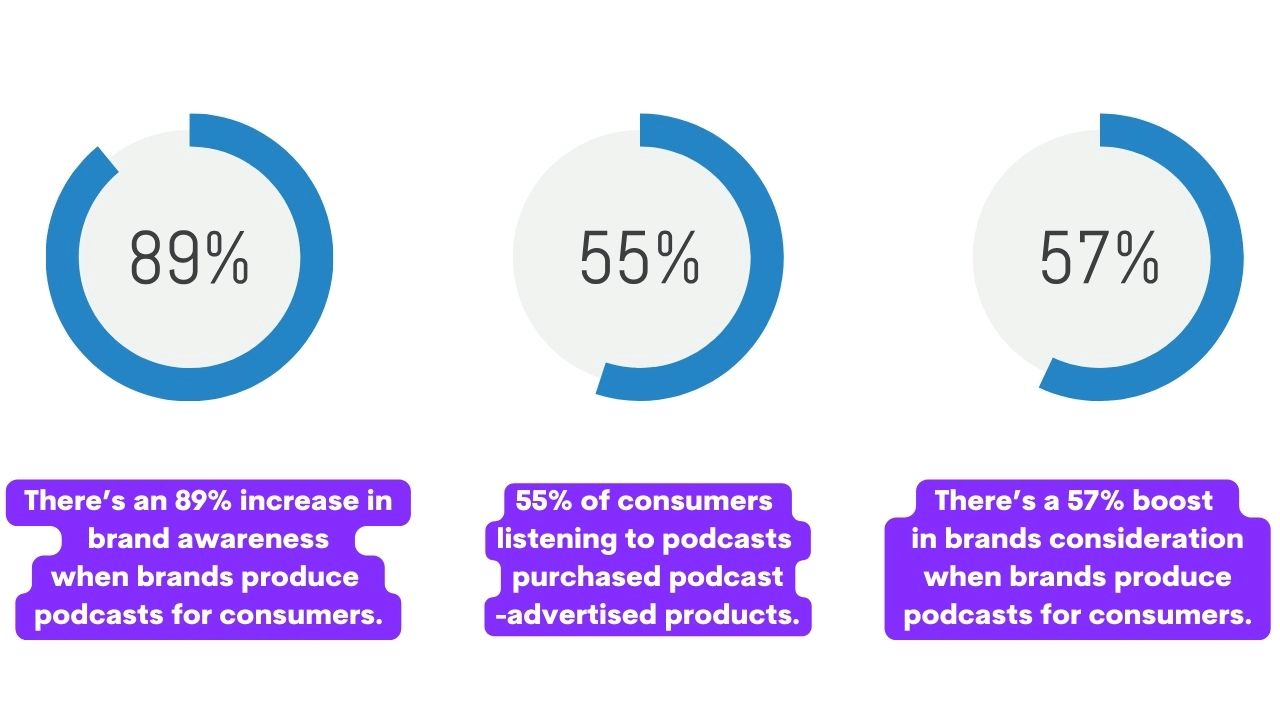
55% of consumers listening to podcasts purchased podcast-advertised products.
More than half of people who listen to 5-plus podcasts per week pay attention to podcast ads.
It should be noted that some of the above stats apply to advertisements that appear on a podcast, not necessarily a branded podcast.
However, besides being one of the best content ideas around, a branded podcast is one long ad.
Of course, how you choose to go about promotions in your branded podcast is up to you–it’s typically wise not to have your hosts acting like a sales team pushing products.
Podcasts Function Best As Indirect Ads
The “indirect” advertising done by podcasts is highly impactful.
You can discuss surrounding content and interweave subtle mentions of your brand.
Typically, the results are as follows:
Podcasts garner 16% higher audience engagement (or customer engagement) than surrounding content.
12% more recall than surrounding content.
Even the most skeptical marketing department has to like those results.
Adding podcasts to your content marketing plan could prove a pivotal difference maker.
Where Do Podcasts Fit In Overall Content Planning And Defined Strategy?
How can podcasts fit with your bigger-picture marketing efforts?
Well, you’re fostering your brand identity with current and potential customers.
Moreover, podcasts work at every funnel stage, vastly enhancing your overall sales process.
Moreover, you’re frequently publishing podcasts, allowing you to post relevant content that speaks to your consumer base’s immediate needs and interests.
Podcasts also help your search ranking and organic traffic since Google’s gone out of its way for episodes to appear in SERPs.
Thus, you can vastly enhance your monthly search volume when podcasts are executed correctly.
Podcasts: Creating Content To Be Repurposed.
The podcast creation process often transforms into a video project as well as audio.
A recent survey shows that almost 60% of podcast listeners prefer vodcasts.
Pictory has various services and functions to help you get the most out of your video podcasts.
Before we get into specifics, here’s some context:
Did you know that 52% of podcast listeners prioritize accessibility as a key element?
Moreover, 44% of the same customers cite the high value of accurate podcast transcriptions.
Additionally, podcast transcription can boost your SEO, increasing your online visibility and search volume while getting more eyes on your brand and its quality content.
Let’s circle back to effective keywords and how you can create processes to incorporate them into more than blogs or web copy.
Specifically, saying keywords in a transcribed podcast is one more way to get discovered through search queries.
Plus, outside of some additional keyword research to incorporate into your podcast, the extra legwork is minimal for transcriptions with Pictory.
Our automatic transcription services give you all the above benefits in mere minutes.
The Pictory Transcription Solution Is A Game-Changer.
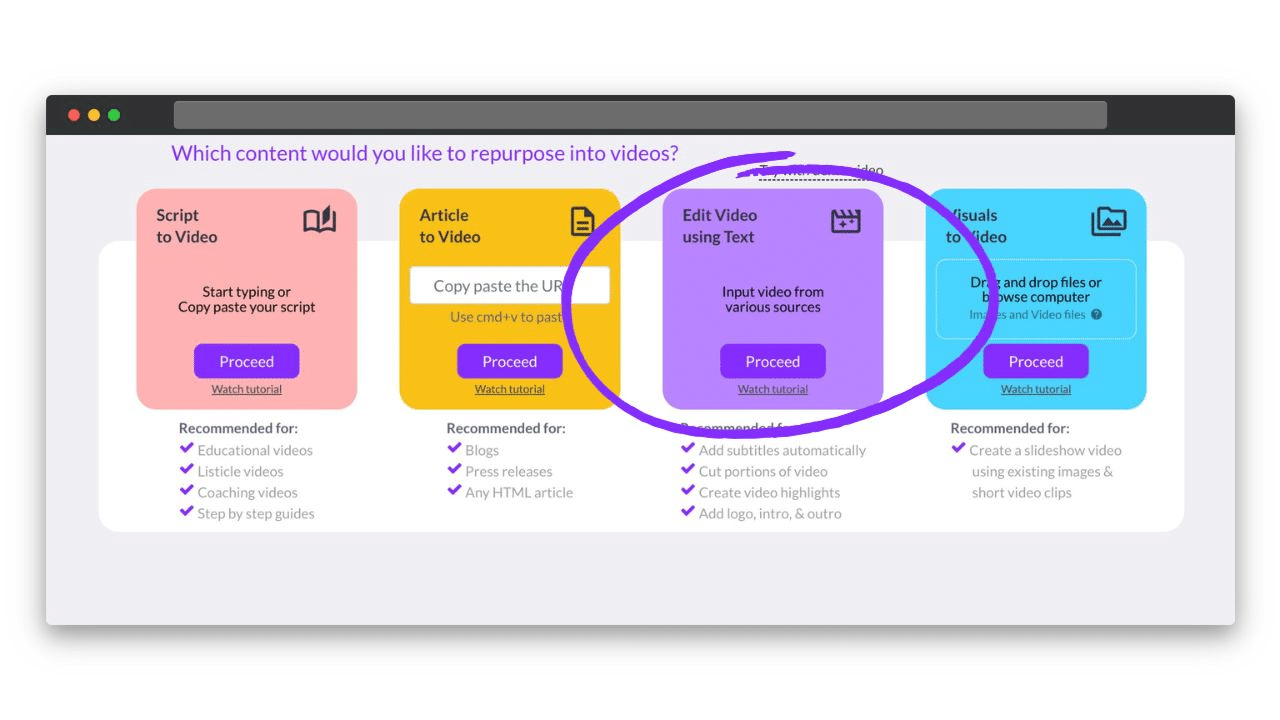
Pictory’s Edit Videos Using Text feature allows users to remove filler words like “umms” and “errs,” ensuring your transcribed vodcast text is clear and concise.
So, vodcasts enable you to make unique and engaging content, and they also easily repurpose existing content.
They’re a versatile, malleable component of any content planning approach.
Branded Videos: Quality Content Ideas That’ll Take Your Company’s Brand Identity Over The Top.
A branded video marketing strategy helps all facets of your promotional and outreach efforts.
First and foremost, videos are highly versatile.
We discussed earlier how shorter videos on social media are making waves.
We also know long-form still has its place, as suggested by the growing popularity of video podcasts.
Realistically, branded videos could take on any number of forms.
You could produce vlogs and how-to guides.
Product demos are always highly effective.
Webinars are always an option, too, and we’re only scratching the surface.
Give Consumers the Video they Want
Over 90% of consumers desire more branded online videos.

Experts have discovered that the human brain digests visuals 60,000 times quicker than it does with text.
Thus, it empowers you to connect more profoundly with your audience, accessing the deeper layers you need to make a lasting impression.
Videos are a Cost-Friendly Solution with Pictory.
This topic is crucial in nature.
Many experienced marketers haven’t had the luxury of incorporating videos into their content planning approach.
The lack of videos when creating content often involves a lack of available resources (e.g., time and money).
Pictory enables content planning (and executing) teams without endlessly available funds and a wealth of allotted time to produce high-quality videos in minutes.
All you need to do is write the content during your planning stage, then use our Script-to-Video Tool.
On top of our service’s awe-inspiring visuals, we also have 15,000 music tracks from industry leaders StoryBlocks and Melod.ie.
The available tracks are all royalty-free forever.
You don’t need to concern yourself over potential copyright claims.
Essential Components of Content Marketing and Content Planning.
This section will thoroughly examine the primary elements of content marketing and planning.
A Brief Component Overview.
Five crucial elements exist in successful, enduring content marketing:
Brand Story.
Audience Personas.
An Action Plan.
Business Case.
What’s Your Brand’s Story?
Brand stories summarize the following information for your company:
Mission.
History.
Values.
Purpose.
Iron out your brand story to help create impactful content with resounding messaging about relevant topics.
This will give your brand context, tone, and direction in content planning efforts.
Your Customer is Your Protagonist.
Your customer is your story’s hero, along with their challenges and goals.
Also, include your brand’s unique personality, its purpose, and your company’s core values.
Communicate how your content and products can empower your hero and solidify everything discussed above.
With your brand story in mind, you’ll offer customers a consistent experience they can always count on.
You’ll also foster a defined image when posting content on all channels.
Questions to Ask About Your Brand’s Story.
When fine-tuning your brand story, ask yourself these questions:
What are your objectives?
What unique value does your brand offer?
Who’s your primary competition?
What does your competitor research tell you about their brand marketing?
How is your product/service superior to your competitors’ offerings?
We skipped one question since it seamlessly leads into the following section: What kind of customers are you targeting?
Establishing Your Audience.
Your brand story and audience need to coexist and mesh for optimal results.
An audience needs a story to sink their teeth into a brand, and a brand needs an audience to listen to their story.
Once you establish your ideal audience–the one that best suits your brand–you’ll have the pivotal ingredient that makes your story pop.
Existing Audiences Tell You What You Need to Know
Your current customers can tell you much about your story.
The benefits you offer them–the unique selling points that attract them–will drive much of your narrative.
Keeping informed about industry trends will also be vital to your cause.
Also, you want to know the customers that you should avoid targeting.
Doing so keeps your messaging focused and concise.
You don’t want to spread yourself thin.
Knowledge of your competitors’ targets will also shed valuable insights into your audience persona.
Formalize your persona so you can communicate it concisely to your target consumers and stakeholders.
Be sure to research some examples you can use as inspiration.
What is Your Content Marketing’s Purpose?

Define the unique value provided by your brand’s amazing content.
This will help differentiate you from your industry rivals.
Then, hash out your content marketing mission statement to summarize why you’re creating your content.
Include information and data about who your content helps.
Ensure your mission statement includes:
Who is your content for? (Target consumer)
What answers or information will you offer? (Unique benefit)
What will your content do to help your audience solve their problems? (Result or outcome).
Establishing a Business Case.
A documented business case will clarify the risks, costs, and benefits of content planning and strategy implementation throughout your organization.
Determining a business case keeps everyone on your team on the straight and narrow since it’s a project management document.
In other words, it establishes the “why” of specific tasks and details how their costs are outweighed by the benefits.
How will Content Marketing Help You Accomplish Your Goals?
Identifying your business goals and establishing how content marketing will help reach them will place you on a successful path.
Also, be sure to determine these two factors:
What are the desired results of your content?
What resources are required to accomplish your goals?
You can then create a cost-effective budget without limiting your chances for success.
Consider tracking approved tasks with a marketing project management tool such as Hootsuite.
Making a Plan of Action for Your Content
A formal plan of action for your content enables you to be more proactive and have more intent in execution.
Start your plan by choosing all of your campaign topics.
Decide your preferred channels for distributing content and select an ideal content format that best suits your brand.
Your Action Plan Elements
Ensure the following elements exist in your content calendar:
Deadlines and other notable dates.
Keywords or topics.
Content formats.
Clusters or categories.
Targeted personas.
Be sure to examine your historical content performance to glean insights about your audience.
Perform A Content Audit
Analyze, organize, and improve your existing content by performing a content audit.
This will maximize the performance of the pages you’ve already published, reducing how much extra work you must do on new content.
This approach will help your SEO efforts and boost engagement while bringing more organic traffic to your website.
Determine What Content Your Audience Wants
A content audit also tells you what your audience desires.
Ask yourself these questions when auditing your content:
What keywords perform the best for you?
Where are you getting most of your traffic from?
Historical Content Analysis
Your content strategy must align with high-level business objectives.
For example, your aim might be to become the Midwest’s top SaaS personal loan platform and shatter your previous marketing revenue record.
How can your content help you reach those big-picture objectives, and what kind will help you attract a new audience?
We can’t overstate the importance of relevant metrics in historical content analysis that yield tangible returns for your organization and help determine your vision of company success.
Defining Practical Success Metrics
Every piece of shared and created content should have defined success metrics.
Primary metrics could be:
Organic traffic.
Lead numbers.
Content marketing revenue.
Secondary metrics could be:
Shares.
Rankings.
Your Google Analytics dashboard will provide a helpful lens into performance, enabling you to establish benchmarks and see how you perform against them.
The Value of User-Generated Content
User-generated content, or UGC, has a myriad of reputational benefits for brands like yours.
Included forms of this content are:
Comments.
Photos.
Videos.
Reviews.
UGC Bolsters Your Credibility.
This audience-made content establishes your credibility, proving your products’ and services’ value and benefits.
UGC can prove invaluable to your bottom line.

For instance, 93% of consumers view user-generated content as pivotal in helping them make purchases.
Read our blog about Unleashing the power of User-Generated Content to learn more.
Content Marketing Versus Paid Ads: Looking Beyond Conversions.
Paid ads undoubtedly have their uses.
If you want something to help generate traffic to a landing page and drive immediate purchases, look no further.
When expertly crafted, it’ll get the job done.
Content marketing is about more than simply making a quick conversion.
After all, one purchase doesn’t equal life-long customers.
Instead, content marketing revolves around authority, visibility, and customer loyalty.
You’re building a legacy for your brand.
Learn From Iconic Brands Who’ve Made a Blueprint.
Consider the heavyweights we’ve all let into our lives, like McDonald’s or Nike.
Of course, these are legacy companies, but their lessons are universal.
These brands are iconic because everything they do evokes a specific energy and feel.
This is present in their products, marketing materials, stores, and–since they’ve adapted to modern times–their digital presence.
The super-power brands we reference are institutional.
They’re part of the fabric that builds the global economy as we know it.
Are the successes of McDonald’s and Nike a reasonable bar to set for yourself?
Well, that depends on what motivates you.
However, we’re not suggesting becoming a branding icon (although there’s nothing wrong with reaching for the stars).
We only want you to consider the broader purpose of content marketing and how it can solidify your image and consistency with your target consumer.
Always Leverage the Best Available Tools: Integrate Pictory into Your Campaigns.
At Pictory, our AI-driven video generation and editing software suits any company aiming to seamlessly convert text into captivating videos customized for all content platforms.
We’ve found through our many successful use cases that our tool is valuable to many businesses.
We offer high-quality results at a cost-efficient upfront price.
While our product suits any company looking for a competitive content edge, our Teams plan supports remote collaboration, ensuring everyone’s on the same page, regardless of location.
This plan also offers top-tier results in hybrid work models.
Get 14 days of content creation risk-free and see how Pictory can transform your content marketing strategy!




